Table of Contents
Introduction
Japan’s historical richness and cultural depth make it an ideal destination for immersive historical tours. Exploring Japan’s past not only offers a glimpse into ancient traditions but also sheds light on its modern development. From ancient temples to feudal castles, World War II memorials to traditional tea ceremonies, Japan’s historical tours offer a diverse range of experiences. This outline will delve into key historical tours in Japan, highlighting iconic destinations and thematic experiences that provide a deeper understanding of Japan’s fascinating history and heritage.
Brief overview of Historical Tours in Japan and cultural heritage
Japan boasts a rich historical and cultural heritage that spans thousands of years. From the early Jomon period to the imperial eras, feudal periods, and modern developments, Japan’s history is a tapestry woven with intricate traditions, art, architecture, and philosophies. The country’s historical legacy is evident in its ancient Shinto shrines, majestic Buddhist temples, well-preserved castles, traditional arts like tea ceremonies and calligraphy, and the enduring influence of samurai and ninja traditions. Japan’s cultural heritage is also reflected in its literature, cuisine, performing arts such as kabuki and noh theater, and the enduring reverence for nature seen in its gardens and seasonal festivals.
Importance of historical tours in understanding Japan’s past
Historical tours play a crucial role in unraveling the layers of Japan’s past and understanding its cultural evolution. They provide immersive experiences that go beyond textbooks, allowing visitors to walk through centuries-old temples, witness traditional rituals, explore historical districts, and engage with knowledgeable guides who offer insights into Japan’s history, customs, and beliefs. These tours offer a deeper appreciation for Japan’s heritage, fostering cross-cultural understanding and preserving intangible cultural treasures. By experiencing historical tours, visitors not only gain knowledge but also connect emotionally with Japan’s rich tapestry of traditions, contributing to the preservation and promotion of its cultural heritage for future generations.
Kyoto Historical Tour
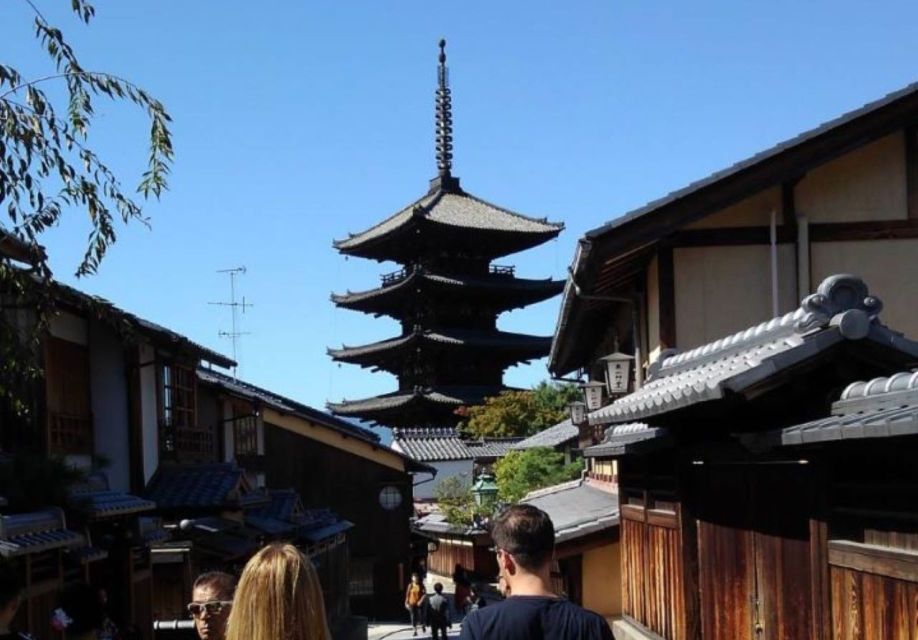
A Kyoto historical tour offers a captivating journey through Japan’s cultural heart. This ancient city, once the capital of Japan, is a treasure trove of historical and spiritual landmarks. The tour typically includes iconic sites such as the Fushimi Inari Shrine, famous for its thousands of vermillion torii gates that wind through a forested hillside, creating a mesmerizing path for visitors. Another highlight is the Kinkaku-ji, or the Golden Pavilion, a stunning Zen Buddhist temple adorned in gold leaf, reflecting beautifully on the surrounding pond. Gion, Kyoto’s historic geisha district, adds a touch of elegance and tradition to the tour, with its preserved wooden machiya houses and the opportunity to glimpse geisha and maiko (apprentice geisha) in their traditional attire. Through a Kyoto historical tour, travelers are transported back in time, immersing themselves in the ancient rituals, architectural marvels, and cultural richness that define this enchanting city
Fushimi Inari Shrine and its iconic torii gates
The Fushimi Inari Shrine stands as an iconic symbol of spiritual devotion and natural beauty in Kyoto. Its most distinctive feature is the winding path of thousands of vibrant orange torii gates, creating a mesmerizing tunnel that leads visitors through a forested mountainside. Each gate, donated by individuals and businesses over centuries, represents a wish or prayer, making this shrine a living testament to Japanese culture and traditions.
Kinkaku-ji (Golden Pavilion) and its historical significance
Kinkaku-ji, also known as the Golden Pavilion, is a striking Zen Buddhist temple that exudes serenity and historical significance. Its top two floors are entirely covered in shimmering gold leaf, reflecting elegantly in the surrounding pond and garden. Originally built in the 14th century as a retirement villa for a shogun, it was later converted into a temple, showcasing the fusion of aristocratic luxury and spiritual devotion that defines much of Japan’s cultural heritage.
Gion district and the traditions of geisha culture
The Gion district of Kyoto embodies the timeless traditions of geisha culture, offering a glimpse into a world of grace, artistry, and refinement. Here, historic wooden machiya houses line narrow cobblestone streets, creating an atmosphere of old-world charm. Geisha and maiko can often be seen elegantly dressed in traditional kimono, hurrying to appointments or entertaining guests in tea houses. Through performances, dance, and music, geisha continue to preserve the beauty and grace of Japan’s artistic heritage, making Gion a captivating destination for those seeking to immerse themselves in the traditions of Japanese culture.
Hiroshima and Nagasaki Tour
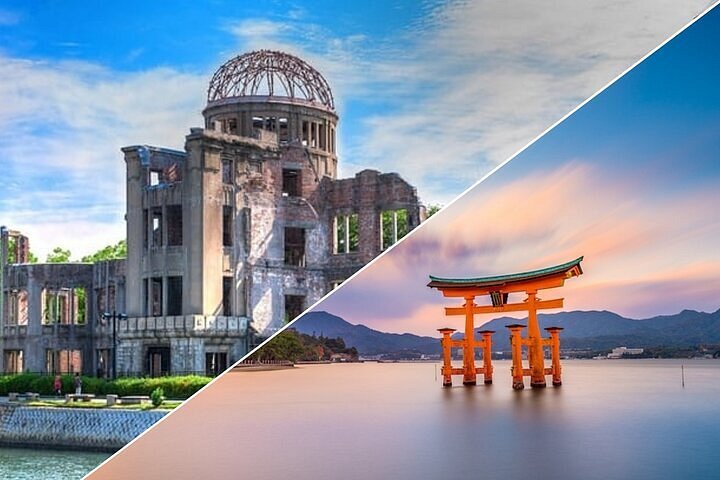
A tour of Hiroshima and Nagasaki offers a profound exploration of the impact of World War II and the resilience of the human spirit. Hiroshima, forever etched in history as the site of the first atomic bombing on August 6, 1945, is now a city of peace and remembrance. The Hiroshima Peace Memorial Park and Museum stand as poignant reminders of the devastation caused by nuclear warfare and the importance of pursuing peace. Visitors can see the Genbaku Dome, a skeletal structure that miraculously survived the blast and now serves as a symbol of hope and a UNESCO World Heritage Site.
Nagasaki, the second city to suffer atomic devastation on August 9, 1945, also offers insights into the lasting effects of nuclear warfare. The Nagasaki Peace Park and Atomic Bomb Museum provide moving exhibits and testimonies that highlight the human cost of the bombings and the ongoing quest for nuclear disarmament. Both cities’ memorials, monuments, and stories of survival serve as powerful reminders of the importance of peace, reconciliation, and the resilience of communities in the face of tragedy.
World War II history and the atomic bombings
The World War II history and the atomic bombings are pivotal aspects of any tour of Hiroshima and Nagasaki, showcasing the profound impact of warfare and the enduring quest for peace. Hiroshima, the first city to suffer an atomic bombing on August 6, 1945, bears witness to the devastating consequences of nuclear warfare. The bombings marked a turning point in history, leading to immense loss of life and prompting a global dialogue on the ethics and consequences of using atomic weapons.
Hiroshima Peace Memorial Museum
The Hiroshima Peace Memorial Museum stands as a solemn tribute to the victims of the atomic bombing and a testament to the city’s resilience. Exhibits within the museum document the events leading up to the bombing, the aftermath of the devastation, and the long-term effects on survivors and their families. Artifacts, personal belongings, and survivor testimonies offer a deeply moving and educational experience, fostering a greater understanding of the human cost of war and the importance of promoting peace and nuclear disarmament
Nagasaki Atomic Bomb Museum
The Nagasaki Atomic Bomb Museum in Nagasaki provides a comprehensive exploration of the atomic bombing on August 9, 1945, and its lasting effects on the city and its inhabitants. The museum’s exhibits delve into the historical context of the bombing, the experiences of survivors, and the ongoing efforts to advocate for peace and nuclear non-proliferation. Through artifacts, photographs, and interactive displays, visitors gain a poignant insight into the tragedies of war and the resilience of communities in rebuilding and promoting peace in the aftermath of devastation.
Tokyo Historical Tour
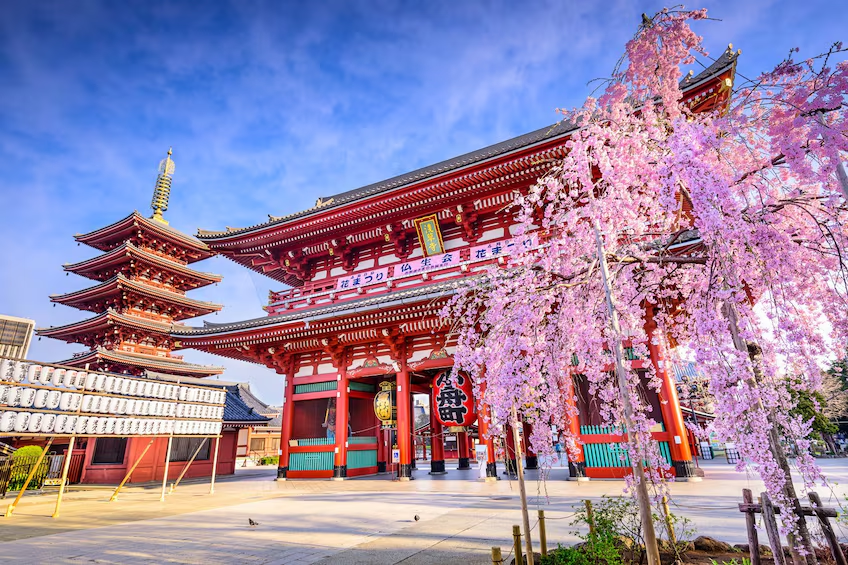
A Tokyo historical tour unveils the multifaceted layers of Japan’s capital city, blending ancient traditions with modern marvels. At the heart of Tokyo’s historical narrative is the Meiji Shrine, a serene oasis surrounded by a lush forest, dedicated to Emperor Meiji and Empress Shoken. Visitors can experience the tranquility of Shinto rituals amidst towering cedar trees, offering a glimpse into Japan’s imperial past.
As the tour continues, explorers encounter the Senso-ji Temple in Asakusa, Tokyo’s oldest temple and a vibrant hub of cultural activity. The temple’s iconic Thunder Gate (Kaminarimon) leads to bustling Nakamise-dori, a lively street lined with traditional shops and eateries, echoing Tokyo’s rich merchant history.
Delving deeper into Tokyo’s past, the Edo-Tokyo Museum immerses visitors in the Edo period (1603-1868), showcasing the city’s transformation from a small fishing village to a bustling metropolis. Exhibits feature scale models, artifacts, and interactive displays, offering insights into daily life, architecture, and the arts during this pivotal era.
A Tokyo historical tour not only illuminates the city’s storied past but also celebrates its vibrant present, where centuries-old traditions harmonize with cutting-edge innovation, making Tokyo a captivating blend of history and modernity.
Meiji Shrine and its role in modern Japanese history
The Meiji Shrine stands as a beacon of modern Japanese history, commemorating Emperor Meiji and Empress Shoken and their pivotal roles in shaping Japan’s transformation during the late 19th and early 20th centuries. Constructed in 1920, the shrine represents Japan’s shift towards modernization, industrialization, and opening to the world. It serves as a place of reverence and reflection, embodying the spirit of progress and unity that defined Japan’s modern era.
Senso-ji Temple in Asakusa and its cultural significance
The Senso-ji Temple in Asakusa holds profound cultural significance as Tokyo’s oldest and most revered temple. Dedicated to the Bodhisattva Kannon, the temple attracts millions of visitors each year who come to pay homage, seek blessings, and experience the rich tapestry of Japanese Buddhist traditions. The vibrant Nakamise-dori leading to the temple is lined with traditional shops selling snacks, souvenirs, and religious artifacts, offering a lively glimpse into Tokyo’s historical and religious heritage.
Edo-Tokyo Museum and the history of Tokyo from the Edo period
The Edo-Tokyo Museum provides a captivating journey through the history of Tokyo, formerly known as Edo, from its humble beginnings as a small fishing village to becoming the bustling capital of Japan. Exhibits at the museum showcase the Edo period’s cultural, social, and economic developments, including the rise of samurai culture, the flourishing arts scene, and the emergence of merchant districts like Nihonbashi. Through intricate models, artifacts, and multimedia displays, visitors can immerse themselves in Tokyo’s rich history and gain a deeper appreciation for its evolution into a global metropolis
Nara Historical Tour
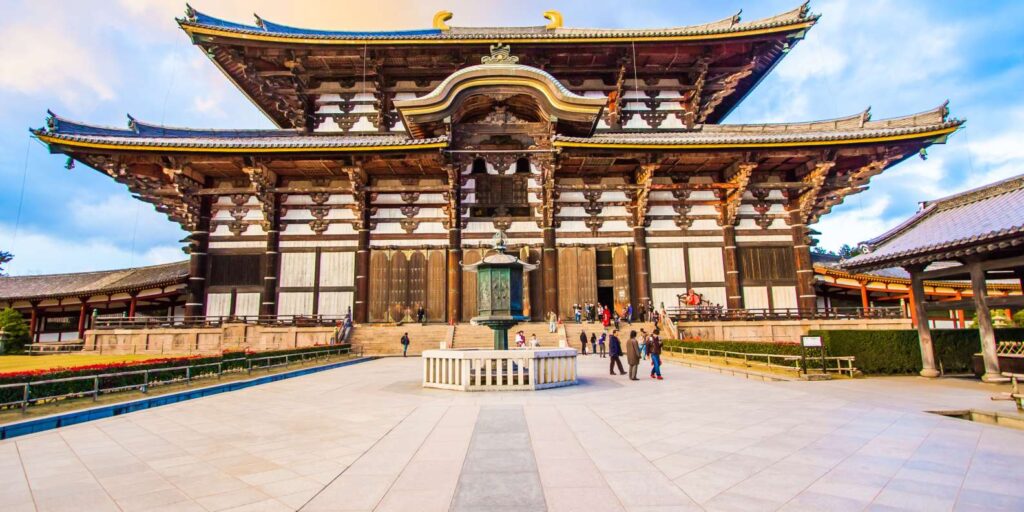
A Nara historical tour offers a captivating journey into Japan’s ancient past, showcasing the cultural and religious significance of this historic city. At the heart of Nara’s historical charm is the Todai-ji Temple, home to the Great Buddha (Daibutsu), a towering bronze statue that embodies the majesty of Buddhist art and architecture. The serene atmosphere of the temple grounds, surrounded by lush gardens and sacred deer roaming freely, creates a peaceful setting for visitors to appreciate Japan’s spiritual heritage.
Another highlight of the Nara tour is the Kasuga Taisha Shrine, known for its thousands of vermilion-colored lanterns that line the pathways, creating a magical ambiance during festivals and ceremonies. The shrine’s architecture reflects the distinctive Kasuga-zukuri style, characterized by its sloping roofs and intricate wooden carvings, offering insights into ancient Japanese craftsmanship and religious traditions.
Exploring Nara’s historical districts, such as Naramachi and Higashimuki Shopping Street, provides a glimpse into the city’s merchant past, with preserved machiya (traditional wooden townhouses), quaint shops, and local crafts. A Nara historical tour not only delves into Japan’s early imperial history but also celebrates the enduring legacy of art, architecture, and cultural traditions that continue to enchant visitors from around the world.
Todai-ji Temple and the Great Buddha
The Todai-ji Temple, nestled in Nara, is a cornerstone of Japan’s historical and religious heritage. Its main hall, known as Daibutsuden, houses the Great Buddha (Daibutsu), an awe-inspiring bronze statue towering at over 15 meters in height. Crafted in the 8th century, this monumental Buddha embodies the skill and devotion of ancient Japanese artisans. Surrounding the temple are tranquil gardens and centuries-old trees, creating a serene atmosphere conducive to contemplation and spiritual reflection.
Kasuga Taisha Shrine and its thousands of lanterns
The Kasuga Taisha Shrine is a cultural gem renowned for its mystical allure. What sets it apart are the thousands of vermilion lanterns adorning its pathways, adding a mystical glow during festivals and evening visits. These lanterns, meticulously maintained and periodically replaced, symbolize devotion and continuity in Japanese Shinto traditions. The shrine’s architecture, with its striking vermilion color and intricate wooden carvings, offers a glimpse into ancient Japanese craftsmanship and spiritual reverence.
Exploring Japan’s early imperial history in Nara
Nara’s historical significance extends to Japan’s early imperial history, serving as the country’s capital from 710 to 794 AD. During this era, known as the Nara period, Buddhism flourished, leaving a lasting impact on Nara’s cultural landscape. Visitors can explore historical sites like the Heijo Palace, once the political and administrative center of ancient Japan, and the Nara National Museum, housing a rich collection of Buddhist art and artifacts. The city’s layout, with wide boulevards and carefully planned temples and shrines, reflects the imperial aspirations and cultural sophistication of this era, making Nara a captivating destination for those interested in Japan’s early history and heritage.
Samurai and Ninja Tours
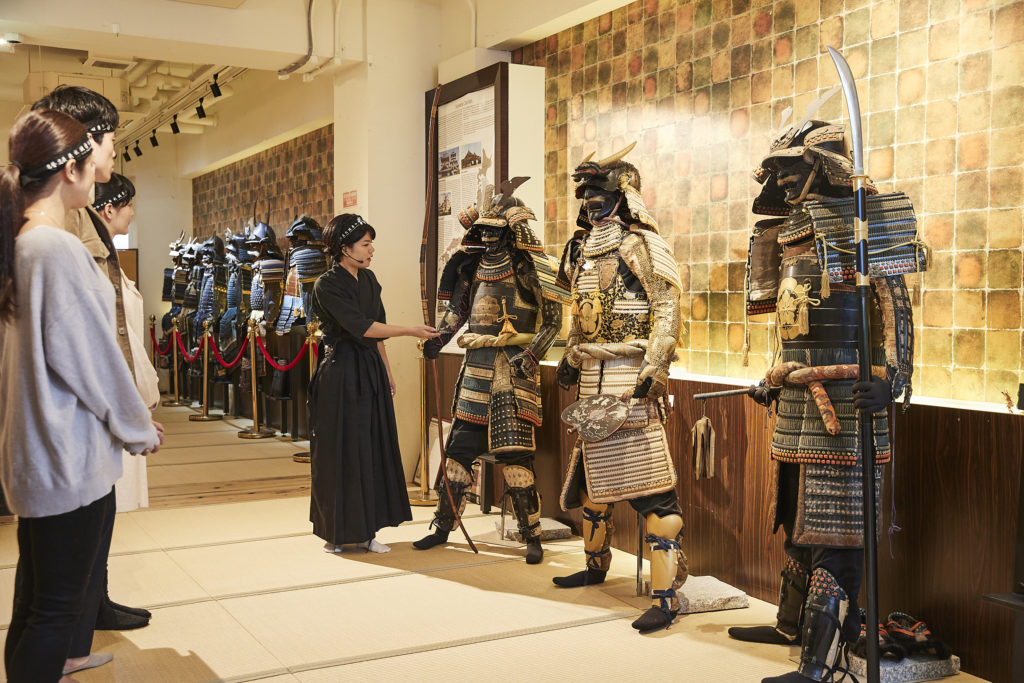
Embarking on a Samurai and Ninja tour in Japan offers a thrilling immersion into the country’s feudal past, exploring the lives and traditions of legendary warriors. These tours often include visits to historical sites, interactive experiences, and demonstrations that bring the martial prowess and code of honor of samurai and the stealthy skills of ninja to life.
One of the highlights of such a tour might be a visit to Himeji Castle, an iconic symbol of Japan’s feudal era. This stunning castle, with its intricate defensive structures and elegant design, provides insight into the strategic importance of fortifications during feudal conflicts. Guided tours within the castle grounds delve into samurai culture, showcasing armor, weapons, and stories of bravery and honor.
Another fascinating aspect of Samurai and Ninja tours is the opportunity to participate in sword-fighting demonstrations and learn about the Bushido code, the ethical system followed by samurai warriors. Skilled instructors demonstrate traditional sword techniques and offer hands-on training, allowing participants to experience the discipline and skill required in samurai combat.
For those intrigued by the secretive world of ninja, tours often include visits to ninja villages or themed experiences where participants can learn about stealth techniques, espionage tactics, and the tools of the ninja trade. Interactive activities like shuriken (throwing stars) practice, ninja obstacle courses, and demonstrations of ninjutsu techniques add an element of excitement and intrigue to the tour.
Overall, Samurai and Ninja tours provide a captivating blend of history, martial arts, and cultural insights, offering a unique perspective on Japan’s feudal heritage and the enduring legacy of its legendary warriors.
Samurai sword demonstrations and historical insights
Samurai sword demonstrations are a captivating highlight of Samurai and Ninja tours, offering a window into the world of Japanese martial arts and the legendary skill of samurai warriors. Experienced instructors showcase the artistry and precision of wielding a katana, the traditional samurai sword, demonstrating various techniques and explaining the historical significance of these weapons in feudal Japan. Participants gain a deeper appreciation for the craftsmanship, discipline, and honor associated with the samurai code, known as Bushido, as they witness these dynamic displays.
Visits to castles like Himeji Castle
Visits to castles like Himeji Castle immerse participants in Japan’s feudal history and architectural splendor. Himeji Castle, often referred to as the White Heron Castle due to its striking white exterior and graceful design, is a UNESCO World Heritage site and one of Japan’s most iconic castles. Guided tours of the castle grounds offer insights into its strategic defenses, feudal-era lifestyle, and the role of castles in Japanese society. Participants can explore towering keeps, intricate gates, and defensive structures, gaining a deeper understanding of Japan’s feudal past and the legacy of samurai warriors.
Ninja-themed experiences in places like Kanazawa
Ninja-themed experiences in places like Kanazawa add an element of intrigue and adventure to Samurai and Ninja tours. Kanazawa, known for its historical significance and ninja heritage, offers immersive experiences that delve into the secretive world of ninjutsu. Participants can engage in ninja-themed activities such as stealth training, shuriken throwing, and exploring ninja houses with hidden traps and secret passages. These hands-on experiences provide a fun and educational glimpse into the skills, tactics, and legends surrounding ninja warriors, adding an exciting dimension to the tour.
Hokkaido Historical Tour
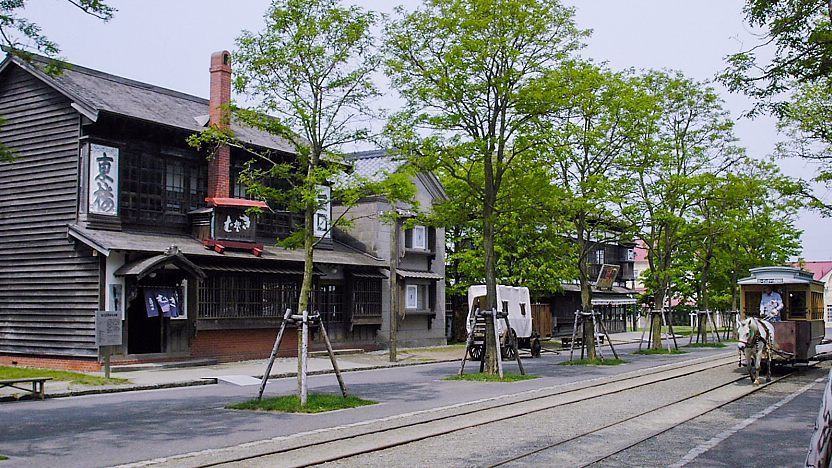
Embarking on a Hokkaido historical tour is a journey into Japan’s northern frontier, where rugged landscapes, indigenous cultures, and a unique history blend harmoniously. Hokkaido, Japan’s second-largest island, offers a wealth of historical sites and cultural experiences that showcase its diverse heritage.
One of the highlights of a Hokkaido historical tour is exploring the Ainu culture, the indigenous people of the region. Visits to places like the Shiraoi Ainu Museum provide insights into Ainu traditions, art, and way of life. Participants can learn about Ainu rituals, crafts such as woodcarving and embroidery, and the deep spiritual connection with nature that defines Ainu culture.
Another fascinating aspect of Hokkaido’s history is its role in Japan’s modernization and development. The city of Sapporo, Hokkaido’s capital, offers glimpses into this transformation through sites like the Sapporo Clock Tower, a symbol of Hokkaido’s pioneering spirit. The Historic Village of Hokkaido, an open-air museum, recreates rural life during the Meiji and Taisho periods, showcasing traditional farmhouses, schools, and workshops.
Nature also plays a significant role in Hokkaido’s historical narrative. Tours often include visits to scenic spots like Shikotsu-Toya National Park, where volcanic landscapes, pristine lakes, and hot springs offer a retreat into Japan’s natural beauty and geological history.
Overall, a Hokkaido historical tour combines elements of indigenous heritage, modern history, and natural wonders, providing a comprehensive and enriching experience that highlights the island’s unique contributions to Japan’s cultural tapestry.
Hokkaido Museum and the island’s unique history
The Hokkaido Museum stands as a gateway to understanding the island’s unique history and cultural evolution. Through interactive exhibits, artifacts, and multimedia displays, visitors delve into Hokkaido’s role in Japan’s development, from its Ainu roots to its modernization and economic growth. The museum showcases Hokkaido’s diverse landscapes, wildlife, industries, and the cultural heritage of its indigenous Ainu people, offering a comprehensive view of the island’s historical significance.
Exploring historical villages like Sapporo and Otaru
Exploring historical villages like Sapporo and Otaru provides a glimpse into Hokkaido’s past as a frontier region and its transformation into vibrant urban centers. Sapporo, Hokkaido’s capital, boasts a blend of modernity and tradition, with landmarks like the Sapporo Clock Tower and the Former Hokkaido Government Office Building reflecting its Meiji-era beginnings. Otaru, known for its canal district and preserved merchant houses, offers a nostalgic journey into Hokkaido’s maritime and trading history, showcasing the influence of foreign cultures and industries on the region.
Learning about Ainu culture, the indigenous people of Hokkaido
Learning about Ainu culture, the indigenous people of Hokkaido, is a central aspect of Hokkaido historical tours. Visits to places like the Shiraoi Ainu Museum and the Nibutani Ainu Cultural Museum provide immersive experiences where participants can explore Ainu traditions, art, language, and spirituality. Through exhibits, workshops, and performances, visitors gain a deeper appreciation for the Ainu’s deep connection with nature, their distinctive crafts such as weaving and woodcarving, and their efforts to preserve and revitalize their cultural heritage in modern times.
Tea Ceremony and Zen Buddhism Tours
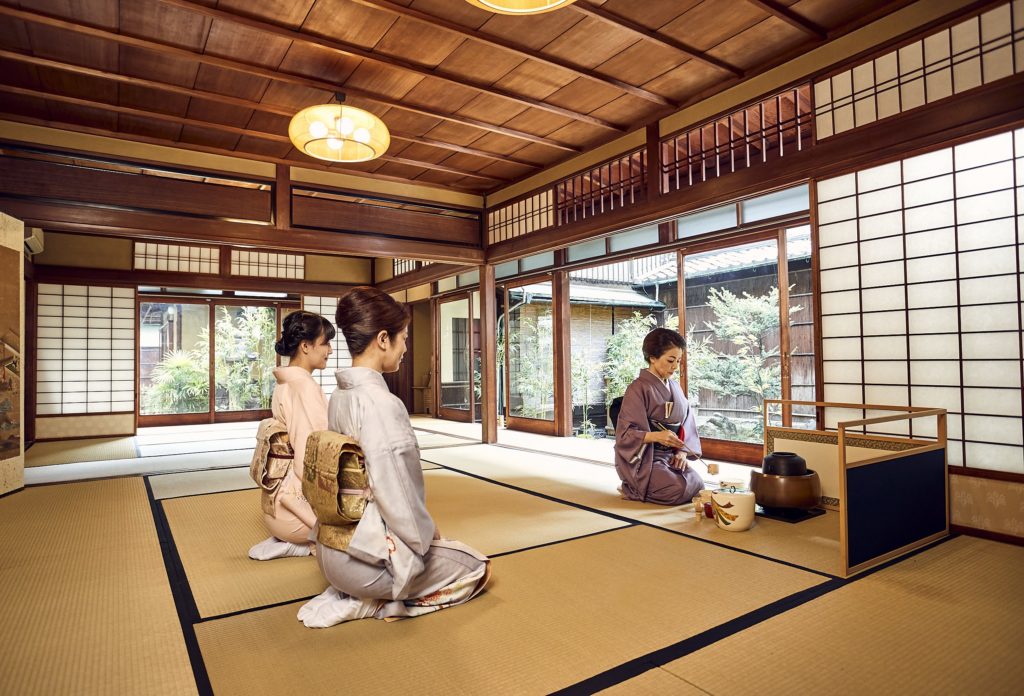
Embarking on a Tea Ceremony and Zen Buddhism tour in Japan is a serene and enlightening experience, delving into the spiritual and cultural practices that have shaped Japanese society for centuries. These tours offer a deep dive into the art of tea, known as chanoyu or chado, and the Zen Buddhist philosophy that underpins it.
A highlight of such a tour is participating in a traditional Japanese tea ceremony, where every gesture and movement holds profound meaning. Led by a tea master (chajin), participants learn about the meticulous preparation of matcha (powdered green tea), the significance of the tea utensils, and the principles of harmony, respect, purity, and tranquility (wa, kei, sei, and jaku) that guide the ceremony. Sipping tea in a serene tatami room, surrounded by beautiful tea utensils and a peaceful atmosphere, allows participants to experience the mindfulness and aesthetic beauty of chanoyu firsthand.
Zen Buddhism tours often include visits to Zen temples and gardens, where participants can engage in meditation sessions guided by experienced monks or practitioners. The simplicity and serenity of Zen gardens, with their carefully placed rocks, raked gravel, and sparse vegetation, create a contemplative space for self-reflection and inner peace. Participants learn about Zen meditation techniques, the concept of mindfulness (sati), and the pursuit of enlightenment (satori) through direct experience and philosophical discussions.
Additionally, these tours may explore the historical and cultural context of Zen Buddhism in Japan, visiting temples with rich artistic and architectural heritage, such as Ryoan-ji Temple in Kyoto with its famous rock garden or Engaku-ji Temple in Kamakura with its serene Zen garden and historic buildings. Through Tea Ceremony and Zen Buddhism tours, participants gain a profound understanding of Japanese aesthetics, spirituality, and the quest for inner harmony in a fast-paced world.
Traditional tea ceremonies and their cultural significance
Traditional tea ceremonies are much more than just a beverage; they are deeply rooted in Japanese culture and philosophy. Known as chanoyu or chado, these ceremonies emphasize harmony, respect, purity, and tranquility. The meticulous preparation of matcha (powdered green tea) and the graceful movements of the tea ceremony symbolize the beauty of simplicity and mindfulness. Each element, from the tea utensils to the tearoom’s design, reflects centuries-old traditions and aesthetics, making tea ceremonies a profound cultural experience that fosters connection, introspection, and appreciation of the present moment.
Zen gardens and Zen Buddhist temples in Kyoto and Kamakura
Zen gardens and Zen Buddhist temples in Kyoto and Kamakura offer immersive experiences into the world of Zen Buddhism and the pursuit of enlightenment. Kyoto, with its rich cultural heritage, is home to iconic Zen temples like Ryoan-ji Temple, renowned for its Zen rock garden that inspires contemplation and stillness. Visitors can participate in meditation sessions, explore tranquil temple grounds, and learn about Zen teachings from experienced monks. Kamakura, known as the home of Zen in Japan, boasts temples such as Engaku-ji Temple with its serene Zen garden and Kencho-ji Temple, one of the oldest Zen training centers. These Zen gardens, characterized by simplicity, natural elements, and symbolic arrangements, serve as metaphors for inner peace, harmony, and the impermanence of life, inviting visitors to connect with their inner selves and the essence of Zen philosophy.
Imperial Palaces Tour
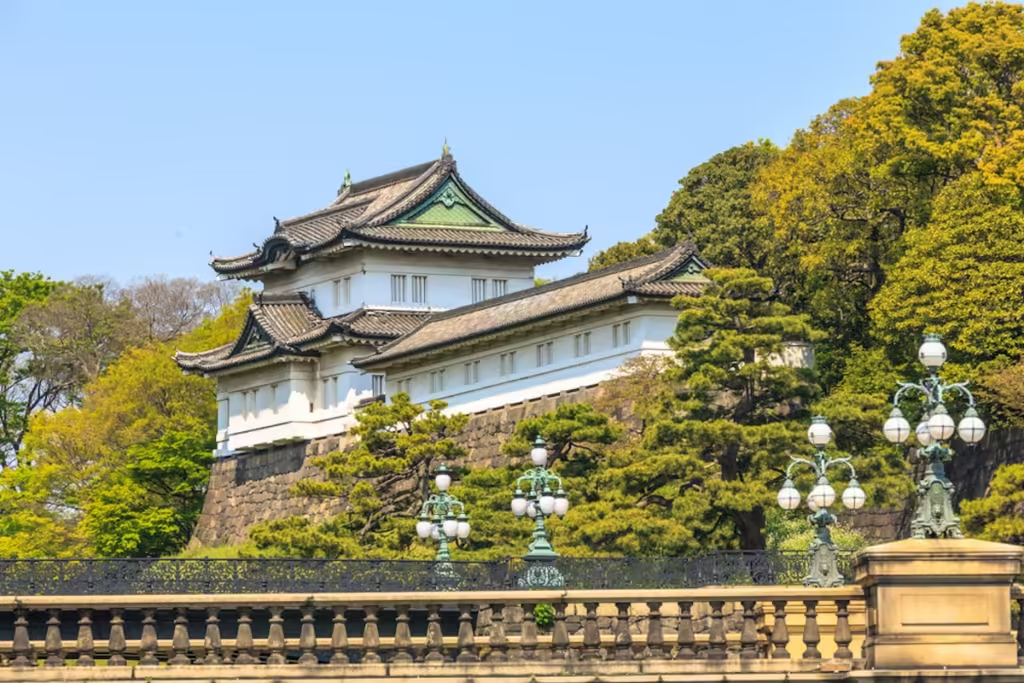
Embarking on an Imperial Palaces tour in Japan offers a glimpse into the country’s rich imperial history, architectural grandeur, and cultural heritage. These tours typically include visits to the imperial palaces in Tokyo and Kyoto, providing insights into Japan’s ancient and modern imperial traditions.
In Tokyo, the primary attraction is the Imperial Palace, the residence of the Emperor of Japan. Surrounded by moats, gardens, and massive stone walls, the Imperial Palace stands as a symbol of Japan’s imperial legacy and the nation’s deep reverence for tradition. Guided tours allow visitors to explore the palace’s East Gardens, which showcase meticulously landscaped gardens, historical ruins, and stunning views of the surrounding cityscape.
In Kyoto, the Imperial Palace (Kyoto Gosho) offers a fascinating journey into Japan’s medieval and early modern history. The palace grounds, featuring traditional wooden buildings, exquisite gardens, and ancient stone paths, transport visitors back to the era of Japan’s imperial court. Guided tours provide insights into the court rituals, architecture, and cultural significance of the Kyoto Imperial Palace, highlighting its role as a cultural and political center.
Some Imperial Palaces tours also include access to areas not usually open to the public, such as the imperial residences and ceremonial halls. Visitors can learn about the imperial family’s daily life, the protocol of imperial ceremonies, and the historical events that shaped Japan’s monarchy.
Overall, an Imperial Palaces tour offers a unique opportunity to delve into Japan’s imperial history, admire architectural marvels, and appreciate the continuity of tradition in a modern society. It provides a deeper understanding of Japan’s cultural identity and the enduring legacy of its imperial institutions.
Tokyo and Kyoto imperial palaces
Tokyo and Kyoto are home to two of Japan’s most iconic imperial palaces in Asia, each offering a unique glimpse into the country’s imperial history and architectural splendor. The Tokyo Imperial Palace, situated in the heart of the bustling capital, serves as the primary residence of the Emperor of Japan. Surrounded by lush gardens, ancient stone walls, and tranquil moats, the palace is a serene oasis amidst the urban landscape. In contrast, the Kyoto Imperial Palace, located in the historic city of Kyoto, showcases traditional wooden buildings, meticulously landscaped gardens, and historic artifacts that reflect Japan’s medieval and early modern periods.
Insights into Japan’s imperial history and architecture
An Imperial Palaces tour provides invaluable insights into Japan’s imperial history and architecture, tracing the evolution of the country’s monarchy from ancient times to the present day. Visitors learn about the customs, rituals, and ceremonies associated with the imperial family, gaining a deeper appreciation for Japan’s cultural heritage. The architecture of the imperial palaces, characterized by intricate wooden structures, symbolic motifs, and harmonious garden designs, reflects Japan’s aesthetic sensibilities and reverence for nature. Through guided tours and historical narratives, participants gain a comprehensive understanding of Japan’s imperial legacy and its enduring impact on the nation’s identity and traditions.
Customizing Historical Tours
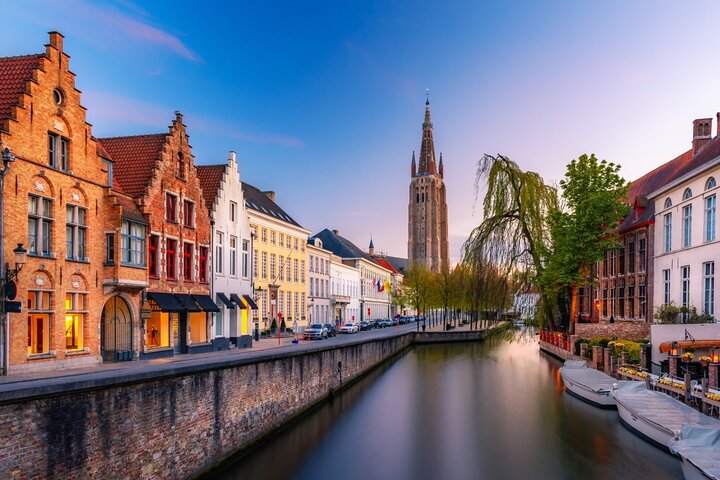
Customizing historical tours offers a tailored and personalized experience that caters to individual interests, preferences, and curiosities. Whether one is passionate about ancient temples, feudal castles, wartime history, traditional arts, or culinary delights, customizing a historical tour allows travelers to delve deeply into specific aspects of Japan’s rich heritage. Tour operators and guides work closely with participants to create bespoke itineraries that align with their interests, ensuring a meaningful and immersive exploration of Japan’s historical and cultural treasures. From themed tours focusing on samurai and ninja traditions to in-depth visits to World War II memorials or serene tea ceremonies, customization empowers travelers to craft unforgettable experiences that resonate with their unique passions and curiosity about Japan’s past.
Tailoring tours based on individual interests
Tailoring tours based on individual interests is a key aspect of providing a memorable and enriching travel experience. Whether someone is fascinated by ancient history, art, cuisine, nature, or a specific period in Japanese history, customizing tours ensures that their journey aligns perfectly with their passions and preferences. Tour operators can work closely with travelers to create personalized itineraries that include visits to historical sites, cultural experiences, hands-on activities, and interactions with local experts. This tailored approach allows travelers to delve deep into the aspects of Japanese history and culture that intrigue them the most, fostering a deeper connection and appreciation for the destination.
Options for exploring specific aspects of Japanese history and culture
Options for exploring specific aspects of Japanese history and culture are abundant, offering a diverse range of experiences for travelers with varied interests. For history enthusiasts, tours can focus on ancient temples, imperial palaces, samurai heritage, or World War II memorials, providing in-depth insights into Japan’s historical milestones and cultural evolution. Art lovers can explore traditional arts like tea ceremonies, calligraphy, and ceramics, or visit contemporary art galleries and museums showcasing modern Japanese art. Food aficionados can embark on culinary tours, sampling regional delicacies, visiting food markets, and learning the art of sushi-making or tea brewing. Nature lovers can immerse themselves in Japan’s natural beauty with tours to scenic landscapes, national parks, hot springs, and gardens. With such diverse options, travelers have the flexibility to tailor their tours to match their specific interests, ensuring a fulfilling and memorable exploration of Japanese history and culture.
Conclusion
In conclusion, embarking on historical tours in Japan offers a captivating journey through the country’s rich tapestry of heritage, culture, and tradition. From the ancient temples of Kyoto to the poignant memorials in Hiroshima and Nagasaki, each destination provides profound insights into Japan’s historical milestones, resilience, and cultural depth. Exploring imperial palaces, samurai traditions, tea ceremonies, and Zen Buddhism offers a deeper understanding of Japan’s diverse and fascinating history. Customizing tours based on individual interests allows travelers to tailor their experiences, delving into specific aspects of Japanese history and culture that resonate with them personally. Whether it’s exploring ancient civilizations, experiencing traditional arts, or savoring culinary delights, Japan’s historical tours cater to a wide range of passions and curiosities. Overall, historical tours in Japan not only educate and inspire but also foster a deep appreciation for the country’s heritage, values, and contributions to the global cultural landscape. They are a testament to Japan’s enduring legacy and the timeless allure of its historical treasures. Japan offers a wealth of diverse historical tours that cater to a wide range of interests and curiosities. From exploring ancient temples and imperial palaces to delving into samurai traditions, wartime history, traditional arts, and culinary delights, there’s a tour for every history enthusiast. Visitors can immerse themselves in the cultural richness of Kyoto, Hiroshima, Nagasaki, Tokyo, Nara, Hokkaido, and other historical destinations, each offering unique insights into Japan’s fascinating past. Whether it’s a tea ceremony experience, a samurai sword demonstration, a visit to a Zen garden, or a tour of World War II sites, the options are endless, promising an unforgettable journey through Japan’s rich historical tapestry. Encouraging travelers to experience Japan’s rich history through guided tours is an invitation to embark on a transformative and immersive exploration. Guided tours offer in-depth knowledge, insider perspectives, and curated experiences that enhance understanding and appreciation. Expert guides bring history to life, weaving narratives, anecdotes, and cultural context into the journey, creating meaningful connections with the past. By choosing guided tours, travelers can navigate historical sites with ease, gain deeper insights, and forge lasting memories while unraveling the mysteries and marvels of Japan’s captivating history.
Read more Historical Tours in South Korea
